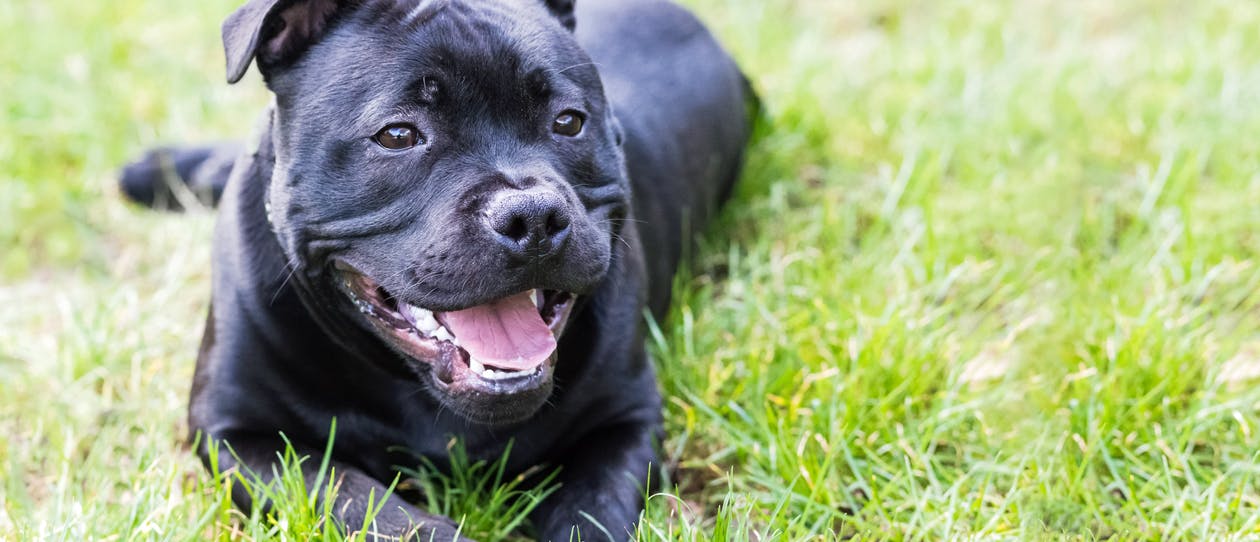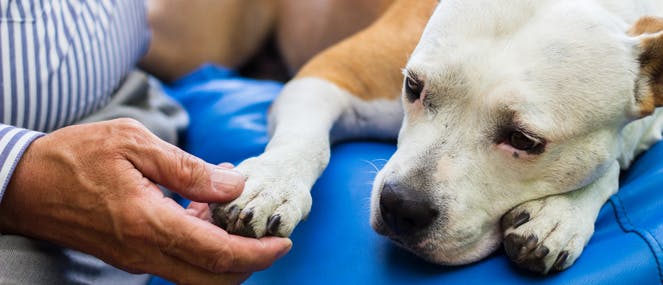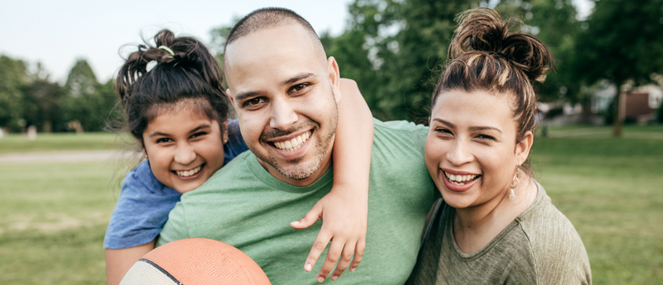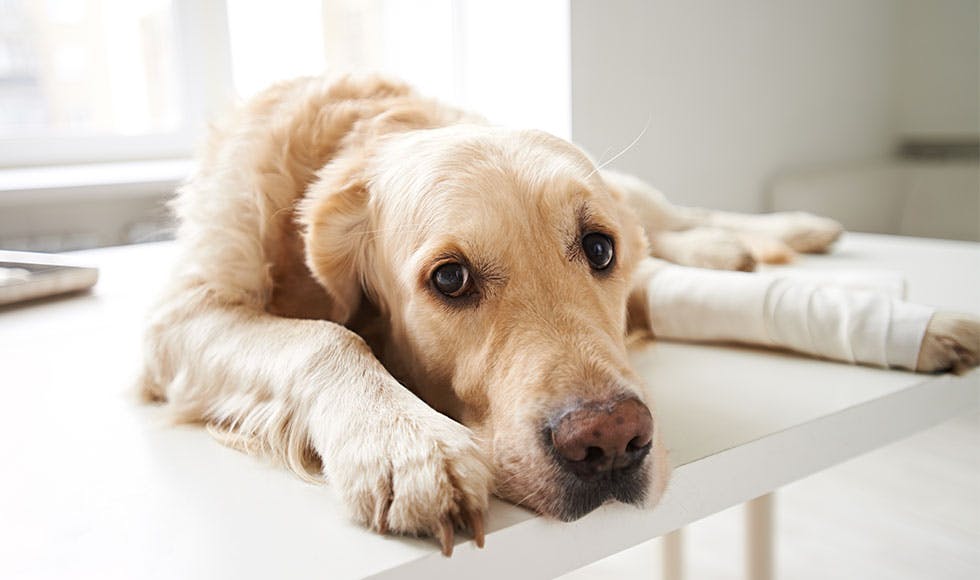
- A Guide To Perfect Your Pet's Health/
- Health and Vitality Products For Your Dog/
- Breed of the month - Staffordshire Bull Terriers


One of the most popular pet breeds in Australia, the Staffordshire Bull Terrier – or Staffy, is a friendly, robust little fellow who considers himself an integral part of the family. With an abundance of enthusiasm and affection, Staffies are patient fellows, ideal for family life.
One of the distinguishing features of the Staffy breed is their enjoyment of having a good ‘chat’ with their humans. Most owners will have multiple stories of their Staff waking them up with a happy bark, then trotting alongside you to the shower or kitchen to continue their morning talk – don’t worry if you’re not at your best first thing, they are quite happy to do all the talking if you’re not up to it.
Staffords are both the most energetic and lazy of breeds. Essentially, if you’re out and about, they’ll love a good run and make an excellent exercise companion. However, when you’re flaking on the couch or off at work, they’ll happily sun themselves for hours without complaint – or lie directly on your body if they can swing it. They do like to be included in everything, so keep their seat belt handy in your car – they’ll want to come along on the school runs and family drives wherever possible.
The biggest misconceptions about this breed is that they are aggressive. While Staffies are likely to win any fight they are drawn into because of their size, shape and jaw structure, they are highly unlikely to start one. By nature, Staffies tend not to be aggressive towards other dogs; even when provoked, they’ll usually walk away if possible. And while temperament is obviously influenced by a dog’s upbringing, they are one of the most people-pleasing breeds, and unlikely to be aggressive towards humans unless they feel threatened.
In terms of training, this people pleasing nature comes in handy – they live for praise, so reinforcing positive behaviour will reap quick results.
What household won’t they suit? Staffies are high maintenance in terms of attention and noise factor. They do not suit a home that prefers constant peace and quiet, nor do they thrive being outside dogs. Another factor worth considering are other pets in your home– Staffy’s are highly energetic and will try and engage other animals into play often. That said, a second dog with similar energy levels is often ideal for the super friendly Staffy, keeping each other in great shape through daily playing and providing company for one another when you’re not home.
Health
There are a range of health conditions that can affect Staffies, so if you’re buying a puppy rather than rescuing, ensure you go through a reputable breeder who is active in a local Staffordshire group. This will help the breed at large as well as your own, as they go to a great deal of effort to breed these health issues out of the lineage.
Always ask to see the results for your pups L2-Hga and HC tests and ensure they are clear. L-2-HGA (L-2-hydroxyglutaric aciduria) is a neurometabolic disorder affecting the central nervous system. This may present as epileptic seizures, a wobbly gait, tremors, muscle stiffness or excitement and altered behaviour. Hereditary Cataracts (or HC) progress rapidly, and dogs will develop total cataract - and blindness, by 2 to 3 years of age.
Hip dysplasia is also common with this breed, and creates various degrees of arthritis. This means pain and discomfort for your dog, often as early as six or seven years of age – and Staffies can live to around 12 years of age, stoically hiding any pain. Have your vet check for this at their annual check-ups, provide a high-quality diet, plenty of exercise and joint supplements may also be of use. [1]Dr Felicia Tam generally recommends glucosamine and chondroitin from a young age (2 years and up) in order to help maintain joint health, and to progress to a natural anti-inflammatory ingredient such as green-lipped mussel from ages 7 and up.
Quick facts:
- Weight: Males 12.7-17 kg, Females: 11-15.4 kg
- Height: 14-16 inches
- Colours: Red, fawn, white, black or blue, or any one of these colours with white, any shade of brindle or any shade of brindle with white.
Got questions? Ask a vet now
Related Products
PAW Osteocare® Joint Health Chews
With Glucosamine Sulfate & Chondroitin Sulfate, these tasty kangaroo chews provide everyday joint care, helping to improve joint function and health in younger and older dogs.
PAW Cosequin® DS
Containing a unique combination of Glucosamine Hydrochloride, Chondroitin Sulfate, Manganese and Vitamin C, which work synergistically to help maintain joint function in dogs.




